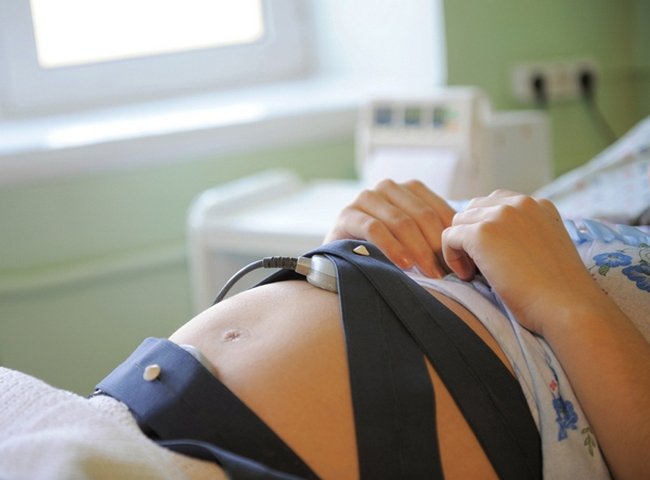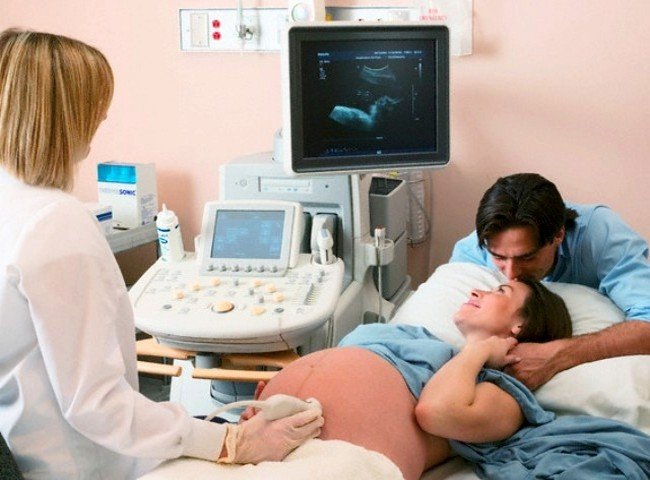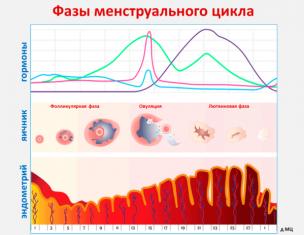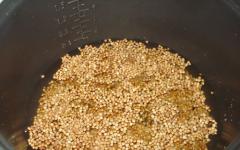For the first time to feel the movements of the baby - is not it a miracle? Is this not happiness? Is this not an honor that is awarded only to those who carry a new life under their hearts and who give that life a continuation. First fetal movement. The moment that every expectant mother expects with some special inner awe and reverence. At first, the barely perceptible timid pushes of the little man, as the baby grows up, become more and more tangible. Very soon after their mother feels them, the future father will also be able to distinguish these movements if he puts his hand on the pregnant woman's stomach. And it turns out that it is not in vain that both parents and a gynecologist who monitors the course of pregnancy are waiting for them with such impatience. After all, they - both the first movements of the fetus and the subsequent ones - can tell a lot about the condition and well-being of the baby there, on the other side of his safe haven.
For your information, the fetus inside the uterus begins to move and move - swim in the amniotic fluid - as early as 8-9 weeks of pregnancy. “Then why does the expectant mother not feel his movements at all?” - you will be surprised. The answer is very simple. The embryo at this time is too small to be seen.
But on the screen of the apparatus for ultrasound research (ultrasound), it is quite possible to observe how the baby moves, and how it touches the walls of the uterus with a pen or leg.

Feeling the first movements of your child under your heart is the privilege of only a future mother. But very soon, dad will be able to feel how the baby is pushing from the inside.
Just admire how rich and meaningful intrauterine life can be!
Video "What do babies do inside moms?"
How to recognize movement?
Each expectant mother, at the scheduled time, begins to listen more carefully to her feelings. In order not to miss the long-awaited moment when the little man living inside her moves. He will give a sign that everything is fine with him, and everything is going according to the eternal script written by Mother Nature.
What should a pregnant woman feel? And how to distinguish the first stirring of a child from, say, intestinal peristalsis? These questions are very difficult to answer unambiguously. After all, every woman, due to her individual physiological differences, due to the peculiarities of the course of pregnancy, can feel the first movements of the fetus in different ways.

Some pregnant women compare the sensations at the first movement of the fetus with the touch of the wings of a butterfly. Poetic, romantic, and loving
How does a pregnant woman feel?
You can feel that the baby, as if lightly stroking you from the inside. Or feel slight tremors: as if a fish is beating against the walls of an aquarium, or a butterfly is trying to be on the other side of the glass. So poetically, some expectant mothers describe their feelings.
And less romantic women compare the first movements of the fetus with stroking, tapping, gurgling or tickling. Some pregnant women may even experience mild pain associated with the motor activity of their little ones.
Quite a bit of time will pass from the moment when you first felt the movements of the baby inside yourself, as it will not be difficult for you to determine by the nature and intensity of the movements whether the little one is sleeping or awake, rejoices or, conversely, protests against some of your actions.
Although this sounds quite surprising, the intrauterine movements of the fetus can tell a lot about its condition and well-being.

Did you know that babies, even unborn ones, love listening to classical music very much? And they express their preferences by increasing motor activity or, conversely, freeze while listening
The language of the movements of the baby: learning to understand your child
- The little ones move most actively, for some reason, just when the mother is completely calm, or lay down to rest. And when the mother is on the move, the kids usually sleep peacefully. This habit remains with them after birth.
- Different peanuts react to loud sounds in their own way. Some calm down and listen, others, on the contrary, begin to actively move in their intrauterine world.
- As soon as the mother takes a not very comfortable position (lie on her back, or cross her legs), the baby will immediately begin to push her from the inside.
- When mom gets tired, kids don't like it either. And they actively announce this through their movements and somersaults.
You should carefully monitor the activity of your child, his movements during the day. Both too intense and frequent fetal tremors, and their absence for a long time can serve as a cause for concern.

CTG (cardiotocography) - a study of the heart rate of the fetus. This is one of the methods for determining hypoxia in a child.
Symptoms and methods for determining hypoxia in crumbs
Starting from the 28th week, the pregnant woman should keep a diary of fetal movements. Marking in it the moments of activity of your baby. There is nothing difficult about keeping a diary. The main thing is to understand the principle. And it is defined in three words: count to ten .
Every day, from 9-00 to 21-00 hours, you count the baby's movements, and enter every tenth in a diary indicating the exact time. It is considered normal when you make 10 such entries in 12 hours. The intervals between them may vary. This is allowed as the child stays awake and sleeps on their own schedule.
If the motor activity of the crumbs is lower or higher than normal by 1.5 times or more, then it is better to consult a doctor in order to diagnose fetal hypoxia in time and take appropriate measures.
hypoxia - oxygen starvation of the fetus. It is fraught with intrauterine growth retardation (IUGR) and other complications. Therefore, it is so important to detect hypoxia in time and carry out prevention or treatment of the causes that cause it.
Doctors use ultrasound to diagnose this condition, as well as, which should normally be 110-170 beats per minute.

Ultrasound provides an opportunity not only to monitor the development of the child at different stages of pregnancy. With its help, future parents with maximum accuracy can find out the expected date of birth and the gender of their unborn baby.
Date of birth by first fetal movement
Some expectant mothers are trying to determine based on when they felt the first movement of the fetus. Say, the baby begins to show motor activity just when half of the gestational age has already passed.
Indeed, people say that if you add 20 weeks to the date of the first movement of the child, you will get the estimated date of birth. And this, no doubt, has its own meaning. But! Let's go back to what was said above.
Due to their individual characteristics, each woman can feel the first movements of her baby sooner or later. And this difference can be one, two or even three weeks.

Determining the date of birth by the first movement of the fetus is almost impossible. Due to the individual characteristics of each woman and the different course of each individual pregnancy
Of course, until more accurate diagnostic methods were invented, why shouldn't our pregnant grandmothers use this? But today they will tell you quite accurately during the next scheduled ultrasound when to prepare for the hospital. And when to wait for the birth of your long-awaited and already such a beloved baby.
Everything has its time. Don't rush time. Enjoy every minute spent with your child. After all, in fact, pushing you with his palms and heels from the inside, he is already communicating with you. So do not leave these first attempts to establish contact without attention. And you will find a common language with the baby much faster when he is born ...









